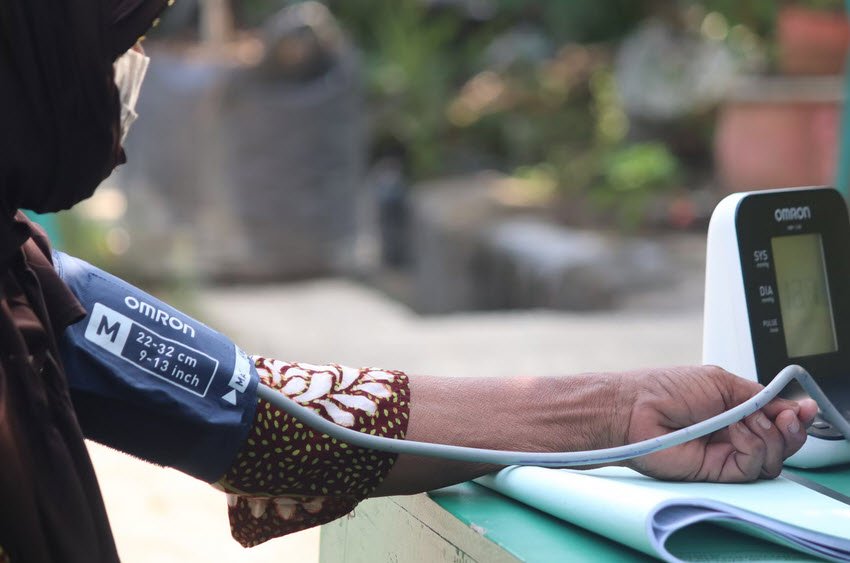
High blood pressure, also known as hypertension, is another major risk factor for heart disease, as well as for kidney disease and congestive heart failure. High blood pressure is also the most important risk factor for stroke. Even slightly high blood pressure levels increase your risk for these conditions.
New research shows that at least 65 million adults in the United States have high blood pressure – a 30-percent increase over the last several years. Equally worrisome, blood pressure levels have increased substantially for American children and teens, which increases their risk of developing hypertension in adulthood.
Major contributors to high blood pressure are a family history of the disease, overweight, and dietary salt. Older individuals are at higher risk than younger people. Among older individuals, women are more likely than men to develop high blood pressure.
African Americans are more likely to develop high blood pressure, and at earlier ages, than Whites. But nearly all of us are at risk, especially as we grow older. Middle-aged Americans who don’t currently have high blood pressure have a 90-percent chance of eventually developing the disease.
Also Read: 6 Major Risk Factors Associated with Heart Diseases
High blood pressure is often called the silent killer because it usually doesn’t cause symptoms. As a result, many people pay little attention to their blood pressure until they become seriously ill. According to a national survey, two-thirds of people with high blood pressure do not have it under control. The good news is that you can take action to control or prevent high blood pressure, and thereby avoid many life-threatening disorders.
A new blood pressure category, called prehypertension, has been created to alert people to their increased risk of developing high blood pressure so that they can take steps to prevent the disease.
What Is Blood Pressure?
Blood pressure is the amount of force exerted by the blood against the walls of the arteries. Everyone has to have some blood pressure, so that blood can get to all of the body’s organs. Usually, blood pressure is expressed as two numbers, such as 120/80, and is measured in millimeters of mercury (mmHg).
The first number is the systolic blood pressure, the amount of force used when the heart beats. The second number, or diastolic blood pressure, is the pressure that exists in the arteries between heartbeats. Because blood pressure changes often, your health care provider should check it on several different days before deciding whether it is too high. Blood pressure is considered “high” when it stays above prehypertensive levels over a period of time.
- Normal blood pressure – Less than 120 mmHg (Systolic) and Less than 80 mmHg (Diastolic)
- Prehypertension – 120–139 mmHg (Systolic) or 80–89 mmHg (Diastolic)
- High blood pressure – 140 mmHg or higher (Systolic) or 90 mmHg or higher (Diastolic)
Understanding Risk
It’s important to understand what each of these categories means. High blood pressure, of course, increases heart disease risk more than any other category. But many people don’t realize that the second category—prehypertension—also increases your risk of heart attack, stroke, and heart failure. To the extent possible, everyone should aim for normal blood pressure levels.
Be aware, too, that a high systolic blood pressure level (first number) is dangerous. If your systolic blood pressure is 140 mmHg or higher, you are more likely to develop cardiovascular and kidney diseases even if your diastolic blood pressure (second number) is in the normal range. After age 50, people are more likely to develop high systolic blood pressure.

High systolic blood pressure is high blood pressure. If you have this condition, you will need to take steps to control it. High blood pressure can be controlled in two ways: by changing your lifestyle and by taking medication.
Changing Your Lifestyle
If your blood pressure is not too high, you may be able to control it entirely by losing weight if you are overweight, getting regular physical activity, cutting down on alcohol, and changing your eating habits. A special eating plan called DASH can help you lower your blood pressure.
DASH stands for “Dietary Approaches to Stop Hypertension.” The DASH eating plan emphasizes fruits, vegetables, whole-grain foods, and low-fat or fat-free milk and milk products. It is rich in magnesium, potassium, and calcium, as well as protein and fiber. It is low in saturated and total fat and cholesterol, and limits red meat, sweets, and beverages with added sugars.
If you follow the DASH eating plan and also consume less sodium, you are likely to reduce your blood pressure even more. Sodium is a substance that affects blood pressure. It is the main ingredient in salt and is found in many processed foods, such as soups, convenience meals, some breads and cereals, and salted snacks.
Taking Medication
If your blood pressure remains high even after you make lifestyle changes, your doctor will probably prescribe medicine. Lifestyle changes will help the medicine work more effectively. In fact, if you are successful with the changes you make in your daily habits, you may be able to gradually reduce how much medication you take.
Taking medicine to lower blood pressure can reduce your risk of stroke, heart attack, congestive heart failure, and kidney disease. If you take a drug and notice any uncomfortable side effects, ask your doctor about changing the dosage or switching to another type of medicine. A recent study found that diuretics (water pills) work better than newer drugs to treat hypertension and prevent some forms of heart disease. If you’re starting treatment for high blood pressure, try a diuretic first.
Suggested Read: Top 10 Questions To Ask Your Doctor Related To Your Heart Health
If you need more than one drug, ask your doctor about making one of them a diuretic. If you’re already taking medicine for high blood pressure, ask about switching to or adding a diuretic. Diuretics work for most people, but if you need a different drug, others are very effective. To make the best choice, talk with your doctor.
A reminder: It is important to take blood pressure medication exactly as your doctor has prescribed it. Before you leave your doctor’s office, make sure you understand the amount of medicine you are supposed to take each day, and the specific times of day you should take it.








